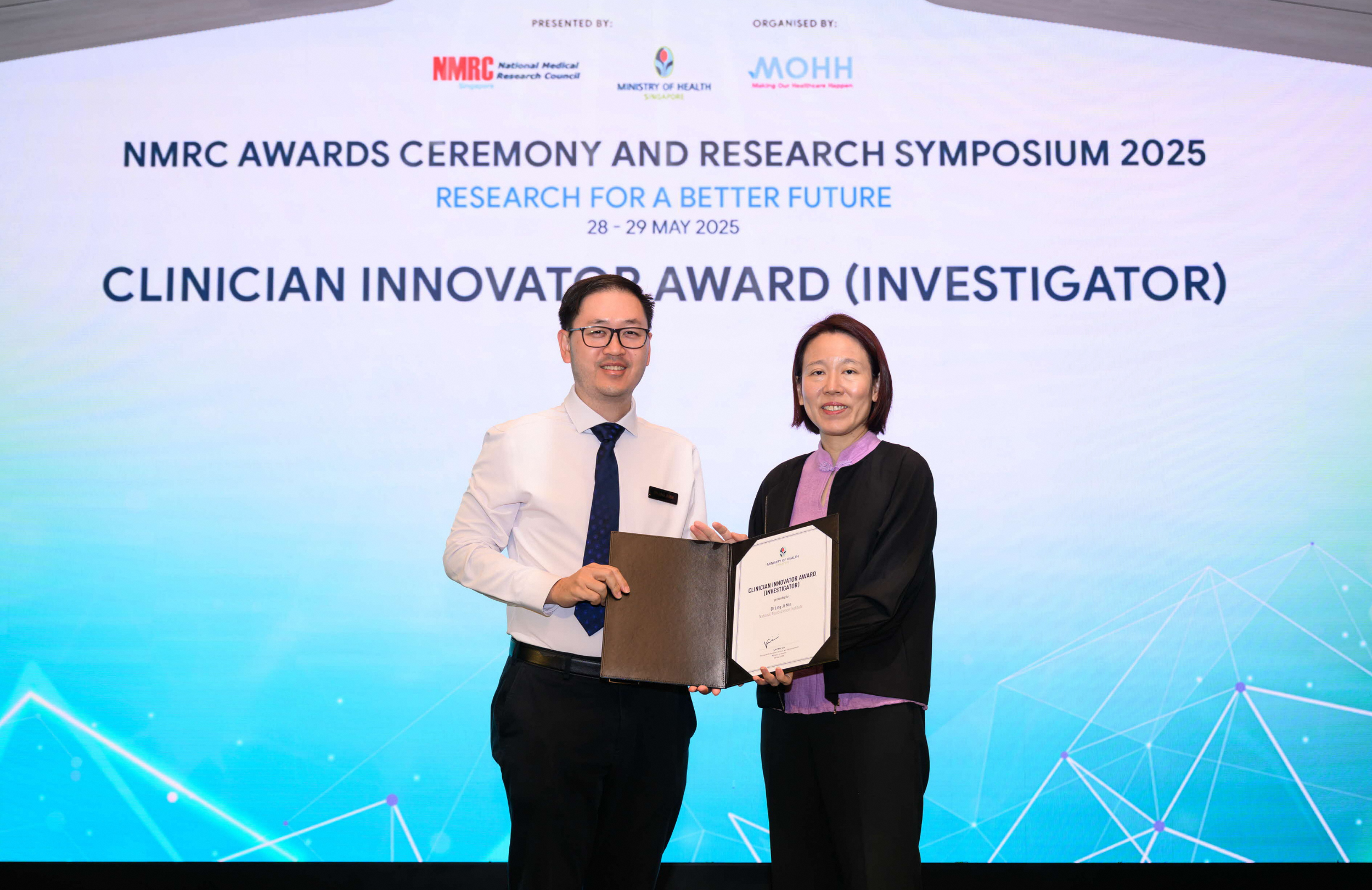National Neuroscience Institute will NEVER ask you to transfer money over a call. If in doubt, call the 24/7 ScamShield helpline at 1799, or visit the ScamShield website at www.scamshield.gov.sg.


Congratulations to Asst Prof Ling Ji Min on receiving the Clinician Innovator Award (Investigator), National Medical Research Council (NMRC), to develop a medical device to improve how hydrocephalus is treated!
Excess fluid in the brain – or, hydrocephalus as it is known medically – is a condition that leaves no room for error. Every hour, nurses need to check and adjust a drainage device by hand, ensuring it is at the same level as the patient’s head. The device is connected to a small tube which is inserted into the brain, and any movement – even the smallest tilt – can disrupt the flow of fluid out of the brain. For patients with hydrocephalus, this routine is both lifesaving and limiting. However, what if this care could be simplified, and patients are given the freedom to sit up or walk a little sooner?
Asst Prof Ling Ji Min, Head of Department and Senior Consultant, Neurosurgery, NNI@TTSH believes it is possible. Recently awarded the Clinician Innovator Award (Investigator) by the NMRC, Asst Prof Ling is working on inventing a more efficient way to manage the treatment of hydrocephalus – from the current bulky bedside setup to a compact drainage device.
“Through this invention, I hope that patients can recover more comfortably, caregivers and nurses can breathe a little easier, and treating hydrocephalus can be made simpler,” said Asst Prof Ling.
In a normal brain, cerebrospinal fluid (CSF) is constantly being produced by the brain, circulated around the brain, and subsequently absorbed into the bloodstream. Hydrocephalus occurs when this fluid accumulates in the brain’s ventricles, or water chambers, due to blockages caused by bleeding in the brain, which typically results from traumatic head injuries or strokes. This causes the ventricles to swell and increases the pressure within the brain.
If not treated promptly, it can cause further brain damage, resulting in coma or even death.
To treat this condition, neurosurgeons perform a life-saving surgery by making a small hole in the skull and inserting a thin silicone tube into the brain’s ventricles. The tube allows excess fluid to drain out, relieving pressure.
“It’s a Goldilocks situation – drain too little fluid and the pressure within the head remains too high; drain too much fluid and there will be other problems like further bleeding in the brain. We need to drain just the right amount of fluid, and this needs to be very carefully controlled,” noted Asst Prof Ling.
To achieve the correct flow, the tube must remain connected to an external drainage device. This device demands precision, where the tube must be exactly at the same level as the patient’s head – a meticulous task requiring hourly checks and adjustments by nurses.
That is why Asst Prof Ling is developing a small, portable drainage device that would be attached to the patient’s skull. This would significantly reduce the burden of care for nurses and will allow patients to sit up and get out of bed sooner rather than later.
The first prototype to be developed by his research team will require doctors to set the desired pressure threshold from common pressure settings installed in the device.
Eventually, Asst Prof Ling hopes to incorporate artificial intelligence into the device such that it senses pressure changes inside the brain and decides on its own how much water to drain.
Keep Healthy With
© 2025 SingHealth Group. All Rights Reserved.
















